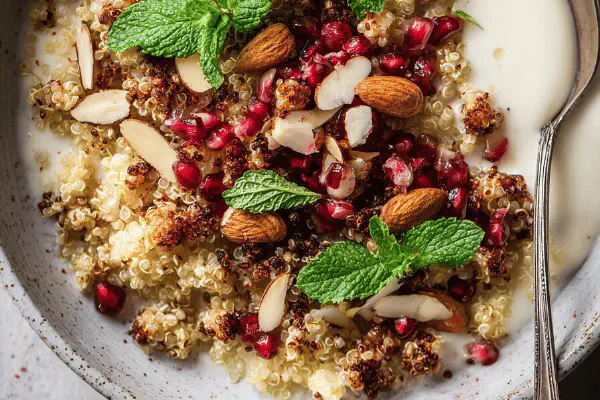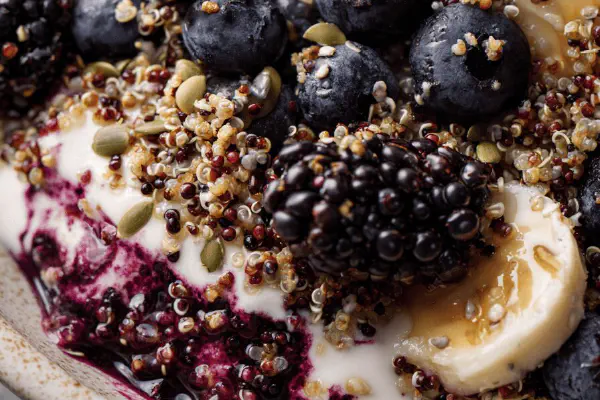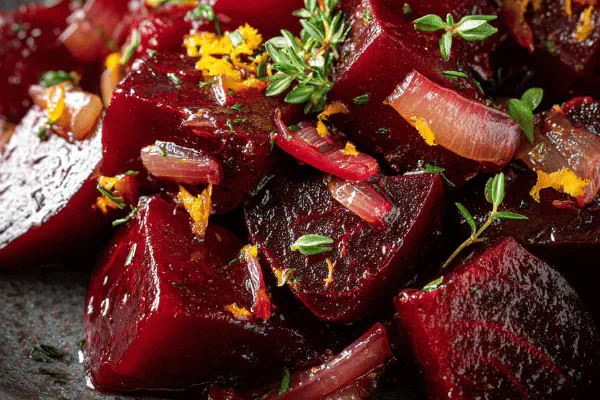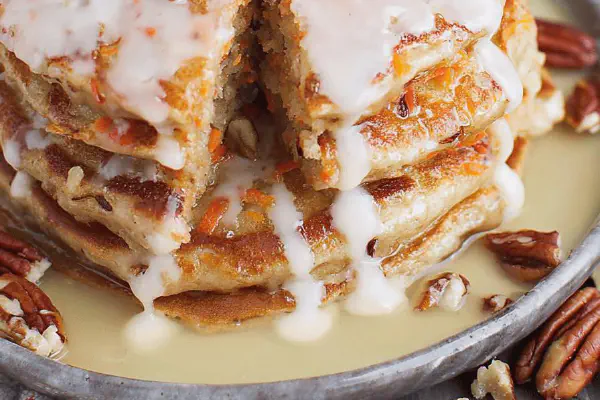Oat Almond Waffles Twist
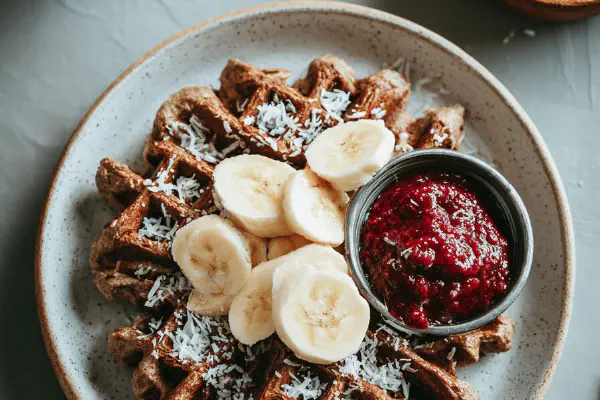
By Emma
Certified Culinary Professional
Ingredients
- 84 g (2/3 cup) buckwheat flour
- 91 g (2/3 cup) sunflower seed flour
- 24 g (3 tbsp) cornstarch
- 2.5 ml (1/2 tsp) baking soda
- 2.5 ml (1/2 tsp) fine sea salt
- 2 large eggs
- 42 g (3 tbsp) dark brown sugar, lightly packed
- 60 ml (1/4 cup) melted coconut oil
- 180 ml (3/4 cup) plain Greek yogurt
- 150 ml (2/3 cup) unsweetened almond milk
About the ingredients
Method
- Start beating eggs and brown sugar together with electric mixer. Whisk 8 to 12 minutes until volume doubles, mixture forms thick ribbons when lifting whip. That’s your air trap; skip and waffles turn dense.
- In a separate bowl, sift together buckwheat, sunflower seed flour, cornstarch, baking soda, and salt thoroughly. Keeps lumps from clumping in batter later.
- Add melted coconut oil slowly while running mixer on low speed through egg-sugar foam. Don't dump all at once or volume collapses.
- Alternate gently folding in dry ingredients with Greek yogurt and almond milk, starting and ending with the flour mix. Use spatula, fold carefully or gluten-free flours can settle and batter becomes gluey when overmixed. Batter looks lumpy but moist, don’t chase smoothness.
- Preheat waffle iron fully; wait for steam to dissipate on opening it between waffles to avoid soggy bottoms. Ladle roughly 120 ml batter each time, spreading slightly but no pressing. Close lid, cook 4 to 6 minutes. Watch surface for golden brown color and that piercing hot steam almost gone. That’s crisp forming.
- If waffles stick, grease with coconut oil or spray—gluten-free batters can cling tougher. Transfer waffles to wire rack, not plate; keeps bottoms crisp while serving.
- Serve warm, drizzle with maple syrup, fresh berries, or a warm banana-cinnamon sauce. These batter nuances you learn with each batch—too wet, waffles soggy; too thick and dry. Adjust milk quantity accordingly.
- Store leftovers wrapped in cloth, reheat in toaster oven for texture revival—not microwave or soggy mess.
- Avoid mixing all at once or beating eggs too short; no air, flat waffles. Too long beating, eggs heat up, breaks foam; crucial timing here.
- Substitutions: oat flour → buckwheat or sorghum flour; almond flour → sunflower seed flour keeps nut-free profile; canola oil → melted coconut oil adds flavor and crisp texture. Milk can be any plant-based milk, yogurt must be thick for acidity to react with baking soda.
Cooking tips
Chef's notes
- 💡 Beat eggs and sugar long. Eight to twelve minutes. Watch volume double; thick ribbons show air trapped. Skip this, eggs don't foam, dense waffles follow. Oil adds flavor but add slow. A drizzle, never dump oil. Foam collapses fast. Timing matters here. Temperature of eggs at room temp helps faster whipping. Volume loss ruins crisp edges.
- 💡 Dry ingredients sifted well. Buckwheat, sunflower seed flour, cornstarch, baking soda, salt combined. Avoid clumps. Folding dry and wet alternately keeps batter airy. Pour some dry, fold wet then dry again. No whisking here; folding preserves air. Batter lumpy but moist, not gluey or smooth. Overmix gluey batter means heavy waffles.
- 💡 Preheat waffle iron fully. Steam stops venting when waffles cook through. Ladle exact amount, about 120 ml. Spread slightly, no press. Close lid, cook four to six minutes. Watch surface color shift golden; puckering little holes, steam stops. That’s cue waffle ready. Sticking? Grease with oil on paper towel. Spray can leave buildup in machine. Wire rack cooling keeps bottoms crisp, plates make soggy.
- 💡 Substitutions detailed. Buckwheat replaces oat - drier crumb, earthier. Sunflower seed flour swaps almond - nut allergies avoided, subtle fat flavor. Milk can shift; almond milk here but plant milks work. Yogurt must be thick; acidity activates soda rise. Coconut oil for crispy surface – melts fully before adding. Cold eggs slow whip, traps less air. Adjust milk quantity for batter thickness; too runny or stiff break crispness.
- 💡 Storage tricky. Leftovers wrapped cloth, reheated toaster oven revives texture. Microwave ruins crisp edges, makes waffles soggy. Timing when beating eggs crucial; not enough air, flat waffles; too long, eggs heat, foam breaks. Watch sensory cues: batter texture, steam vent, crisp color. Visual and tactile much better than timers alone. Smell coconut oil aroma cooking. Sound changes inside waffle iron—less hiss, more crackle.
Common questions
How long to beat eggs for best fluff?
Eight to twelve minutes usually. See volume double. Thick ribbons when lifting whisk. Less air means dense waffles. Overbeat, eggs warm, foam breaks. Watch carefully, don't rush.
Can I swap flours differently?
Buckwheat good for drier crumb; sorghum okay but changes flavor. Sunflower seed keeps nut-free, almond not safe for allergies. Cornstarch key for lightness, skip and heavier result. Yogurt acidity needed for lift; no baking powder here. Milk plant-based or dairy, watch thickness.
Waffles sticking or soggy bottoms?
Preheat iron fully. Oil iron with paper towel dipped in coconut oil, not spray. Ladle batter, spread lightly. Steam vent stops? That’s done. Cool on wire rack, not plate. Soggy if overload batter or iron too cool. Adjust amounts carefully.
Best way to store and reheat?
Wrap waffles in cloth to wick moisture. Reheat toaster oven for crisp edges. Microwave ruins texture, gets mushy. Leftovers keep a couple days cool. Can freeze but reheat the same way for maintaining crispness.
